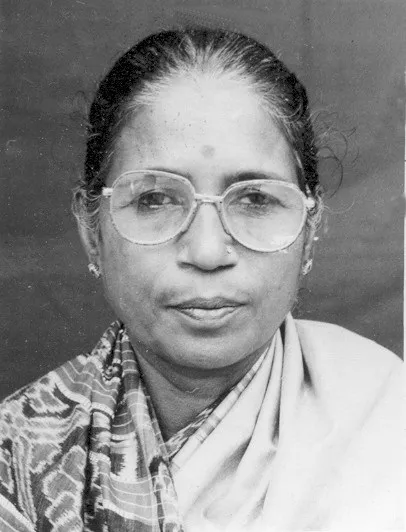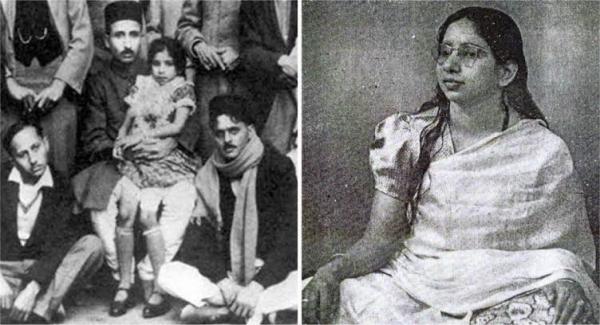Shanti Devi: The Girl Who Lived Twice
In a bustling corner of British India in the early 20th century, a young girl named Shanti Devi from Delhi stunned the world with a claim that defied logic, religion, and science. She said, with quiet certainty, that she had lived before—not metaphorically, but literally. She knew the names, places, people, and even minute details of her previous life with uncanny accuracy.
This story is not a fable or myth told in hushed tones—it was investigated by Mahatma Gandhi himself, probed by psychologists, studied by scholars, and remains one of the most compelling cases of claimed reincarnation in modern recorded history. Even today, the Shanti Devi reincarnation case is remembered as one of the strongest examples of rebirth after death.
 The Beginning of an Unbelievable Claim
The Beginning of an Unbelievable Claim
Born on December 11, 1926, in Delhi, Shanti Devi was a quiet and introverted child. Her early years were uneventful—until the age of four, when she began to tell her parents that she was not their daughter in the true sense. Instead, she insisted that she had a husband and a son in a town called Mathura, over 100 miles away.
Her claims were initially dismissed as childish imagination. But Shanti was persistent. She provided astonishingly specific details:
-
Her husband’s name: Kedar Nath
-
Her own previous name: Lugdi Devi
-
Exact details of her Mathura home—its rooms, layout, and colors
-
Family members and neighborhood customs
For her parents, the story shifted from odd to unsettling.
Parents Turn Sceptical to Curious
Shanti Devi longed to return to Mathura, begging to meet her “real family.” She knew cultural practices of Mathura, such as birth rituals and household traditions, despite never visiting the town. Teachers and neighbors were baffled by her knowledge. Word spread, and soon the Shanti Devi case attracted academics and religious leaders.
Mahatma Gandhi Gets Involved
So extraordinary was her claim that even Mahatma Gandhi took notice. In 1935, he formed a committee of 15 respected figures—including scholars, journalists, and politicians—to test her story. Gandhi wanted facts, not blind faith.
Shanti was taken to Mathura without prior information. What followed shocked even skeptics.
The Mathura Trip: Truth or Miracle?
Upon arrival, Shanti Devi walked through Mathura as if she had lived there all her life. She:
-
Identified her former house
-
Recognized her in-laws instantly
-
Pointed out her bedroom and a hidden money stash that no one else knew about
-
Hugged a young boy, calling him her son, and recalled pet names and lullabies
When she met Kedar Nath, her supposed husband, she broke down and scolded him for remarrying. Everything she said matched with Lugdi Devi’s life, who had died in 1925—just a year before Shanti was born.
Who Was Lugdi Devi?
Lugdi Devi had died during childbirth in 1925. She suffered medical complications and had told her husband before dying that she would return. Her words seemed to echo in the form of Shanti Devi, born soon after.
Shanti Devi’s Life After Recognition
Despite her fame, Shanti Devi chose a simple life. She never married, lived quietly, and stayed deeply spiritual. She passed away in 1987, but her case still fuels debates on karma and rebirth across the world.
Extraordinary Evidence
-
Recognizing People from Photographs – Shanti correctly identified Kedar Nath in a group photo she had never seen before.
-
Performing Rituals – She recalled and performed Mathura-specific marriage prayers and Sanskrit mantras, unknown to her Delhi family.
-
Identifying Belongings – When presented with mixed objects, she picked out Lugdi Devi’s belongings accurately.
-
Hidden Stash – Her claim about hidden money in the Mathura house proved true.
-
Recollection of Death – She vividly described Lugdi’s painful childbirth and fading consciousness, later verified in hospital records.
Her former “son” even testified that Shanti hugged him like his mother and recalled lullabies his mother once sang.
Influence on Research, Films, and Literature
The Shanti Devi reincarnation case inspired books, films, and documentaries. Ian Stevenson’s book 20 Cases Suggestive of Reincarnation includes her as one of the most credible examples. Indian parapsychologist Dr. Satwant Pasricha and K.S. Rawat studied her claims in depth.
The case became internationally famous, covered in BBC documentaries and scholarly journals. Even Shanti Devi Hindi adaptations in print and cinema continue to narrate her unusual story under the title “The Girl Who Lived Twice.”
 Why the Case Still Matters
Why the Case Still Matters
Shanti Devi’s story remains one of the strongest arguments for rebirth after death. To believers, it is living proof of reincarnation. To skeptics, it is a psychological enigma yet to be explained.
Either way, her testimony continues to intrigue those who ponder karma and rebirth—a theme central to Indian philosophy and spirituality.
Final Thought
In a world increasingly driven by science and logic, stories like Shanti Devi’s serve as portals to the unknown, reminding us that some mysteries are not meant to be solved, only experienced. She will forever be remembered as the girl who lived twice.
Disclaimer
The blog “The Girl Who Lived Twice” discusses unusual and rare human experiences. The Shanti Devi case is based on reports and eyewitness accounts, though some details may remain unclear. This blog is meant to highlight the mystery of human existence and rebirth after death, not as a scientific conclusion but as a story of curiosity and survival.



